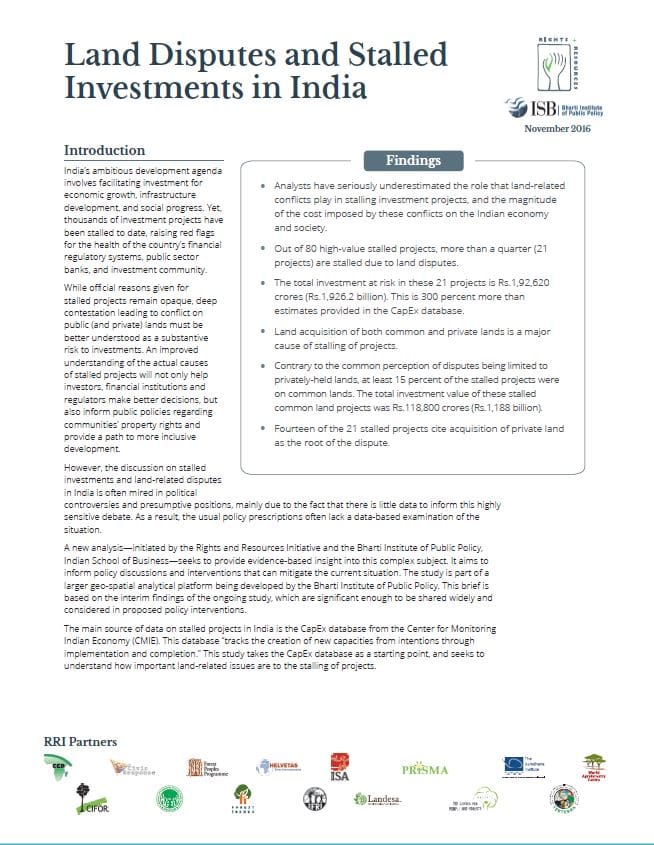Date: November 16, 2016
India’s ambitious development agenda involves facilitating investment for economic growth, infrastructure development, and social progress. Yet, thousands of investment projects have been stalled to date, raising red flags for the health of the country’s financial regulatory systems, public sector banks, and investment community. While official reasons given for stalled projects remain opaque, deep contestation leading to conflict on public (and private) lands must be better understood as a substantive risk to investments. An improved understanding of the actual causes of stalled projects will not only help investors, financial institutions and regulators make better decisions, but also inform public policies regarding communities’ property rights and provide a path to more inclusive development.
This new analysis—initiated by the Rights and Resources Initiative and the Bharti Institute of Public Policy, Indian School of Business—seeks to provide evidence-based insight into this complex subject. It aims to inform policy discussions and interventions that can mitigate the current situation. The study is part of a larger geo-spatial analytical platform being developed by the Bharti Institute of Public Policy. This brief is based on the interim findings of the ongoing study, which are significant enough to be shared widely and considered in proposed policy interventions. The main source of data on stalled projects in India is the CapEx database from the Center for Monitoring Indian Economy (CMIE).
https://doi.org/10.53892/NHEW6671

